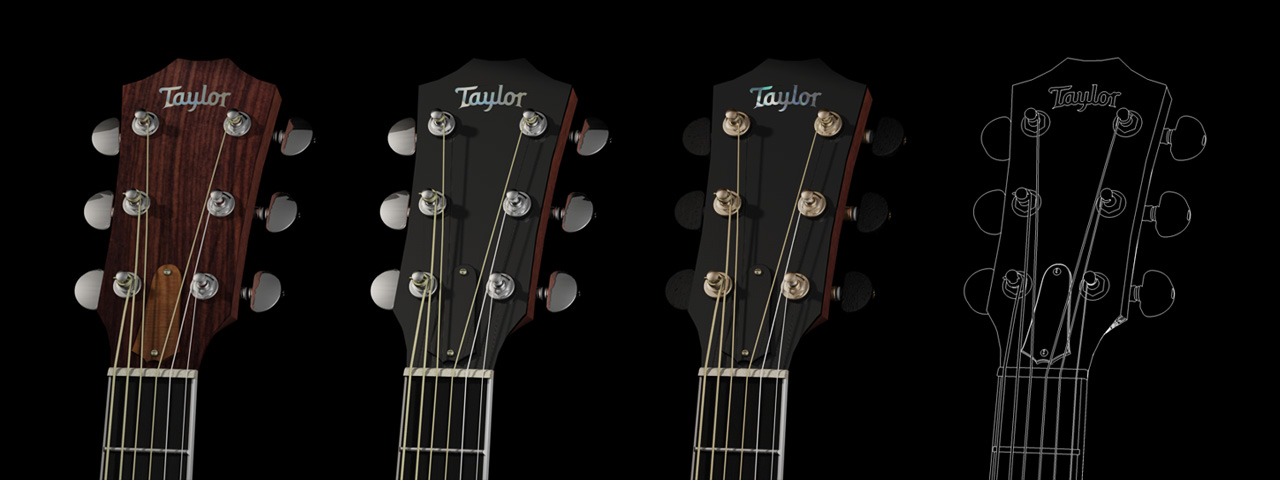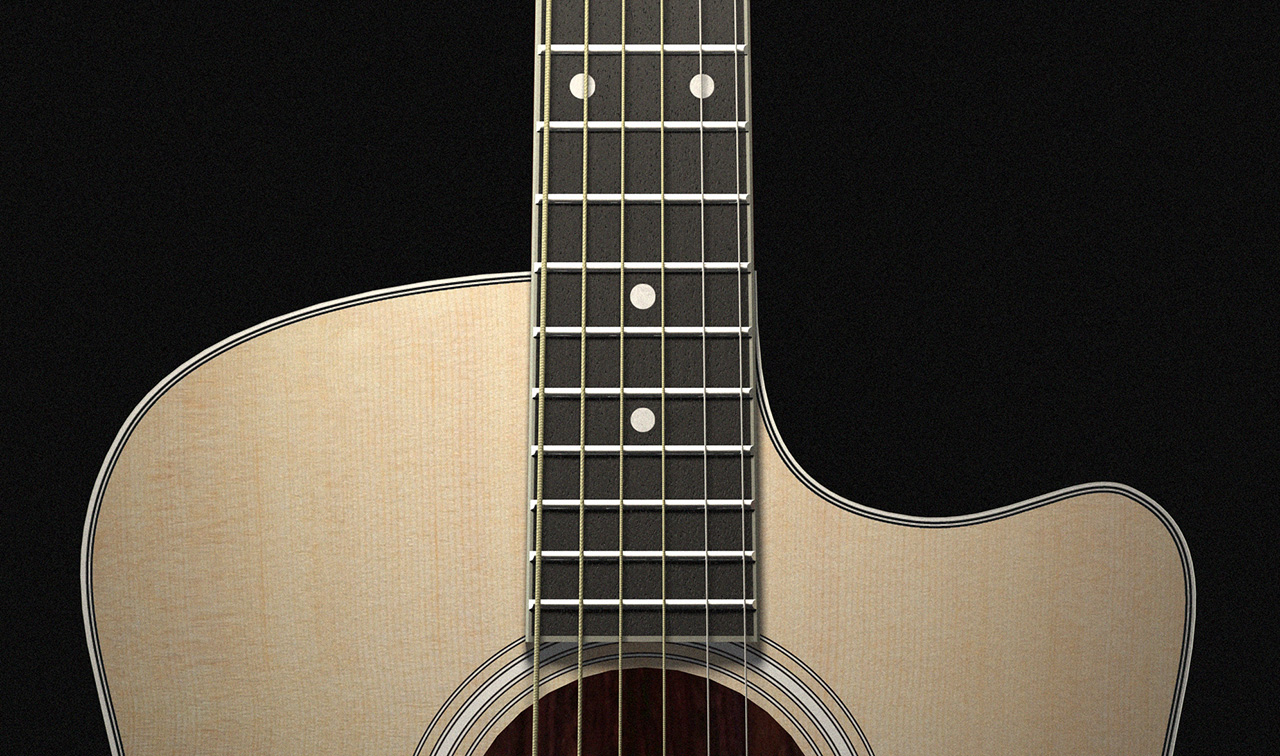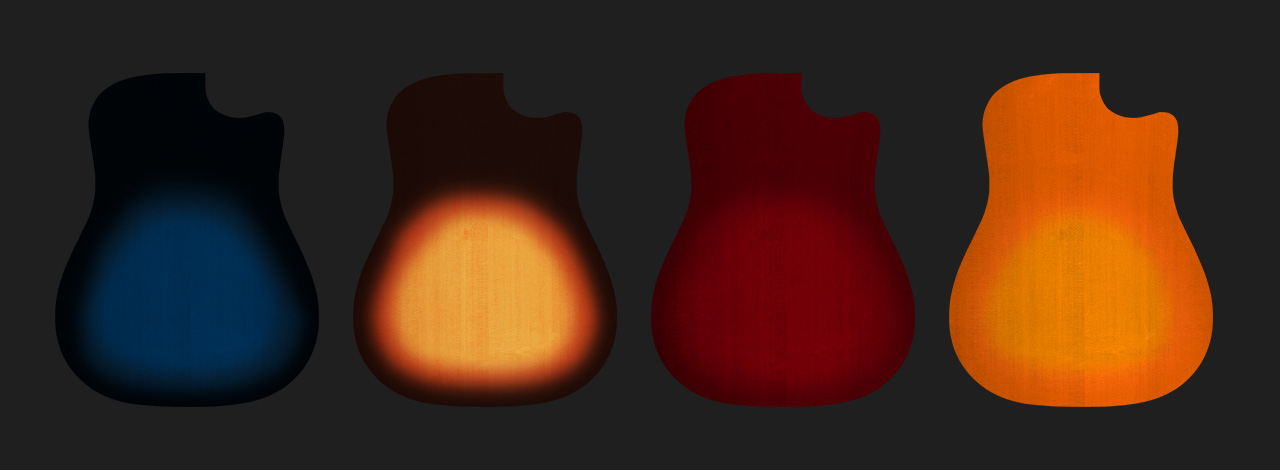Building (Virtual) Taylor Guitars
A Short, Strange Trip
In 2006 I spent a year working on a project for Taylor guitars. It was intended to be an online custom guitar builder, but before it was completed Taylor decided they were not ready to sell guitars this way. The project involved design, 3D, photography, and ActionScript development. Had it launched, it would have been ahead of it time.
The Guitars - Photography, Vector Art, or 3D?
A large part of the project was representing the guitars while adhering to Talyor’s brand. Taylor’s branding relied heavily on beautiful imagery. This needed to come through in the design, but relying on photography while swapping out the individual parts of a guitar wouldn't be practical. Alignment and lighting would have to be perfect, not only in the initial round of photography but in any future rounds. These could occur months or even years later.
3D renders offered a way to swap out parts while always matching angles and lighting. Today this would be an easy decision. Rendering software is capable of a level of photo-realism that was challenging 10 years ago. Due to the number of options and the lack of a networked rendering environment I had to keep the render times low. I couldn't tie up a computer all day that I was also using for web updates and other design projects.
Will it Work?
I needed a proof of concept to show that 3D renders where a viable option. To sell Taylor on the idea I chose their iconic headstock as my subject.
The headstock itself wasn’t challenging to model. For this experiment it only needed to be one angle. I was able to get a SolidWorks file for the tuners that translated cleanly into Cinema 4D, which I used for the initial render. I photographed rosewood for the headstock cover and did the mahogany and ebony textures in Photoshop. I found the abalone on the web. When rendered in parts the layers could be recombined, which is how the swapping of materials would work online.
One Guitar, Many Options
Taylor’s options are extensive and some can’t be combined with others. These options and exceptions had to be defined. This included shapes, woods, inlays, rosettes — anything on the instrument that could be modified.
Testing and Building
I built the guitars in 3D Studio Max (Taylor is a Windows environment.) I had used Max in the past for some industrial animations but I had to relearn it. Luckily these renderings weren’t too difficult. The was no animation, and the angles and lighting were fixed. The main goal was balancing realism, flexibility and speed.
I started with test renders and modeled any parts that weren't available as SolidWorks files.
The manufacturing group gave me some unfinished tops, made from every wood Taylor uses. I photographed these to texture the front, back and sides. Colors and bursts were done in Photoshop.
A complete model was built, texture mapped and lit from two different angles. Each part was on its own layer in StudioMax. These layers were rendered out individually and then composited in a Photoshop file before being saved out as pngs for the eventual Flash interface.
The Front End
As the guitars were being built and rendered, UI options for the front end were designed. ActionScipt was written to select the parts and pass configuration data to the back end for ordering.
A Change of Plans
This is as far as I got when Taylor decided that they couldn’t sell guitars this way. In the future they would sell some guitars with a similar method but nothing quite this ambitious ever went live.
Taylor used this workflow to visualize a prototype of a Doyle Dykes Signature Model guitar before it was built. I don't believe this guitar was ever made.
Before it's Time
In the end I rendered the entire acoustic line and built a technology demo for the front end of the site that allowed a user to switch parts on a single model of guitar. Everything was in place to make this happen but it wasn’t to be.
Even though this project never launched I enjoyed the challenge. Taylor makes beautiful instruments. I play a 410. I'm grateful to have been a part of a company that puts such care and craftsmanship into everything they do.
More renders and combinations can be seen here.



